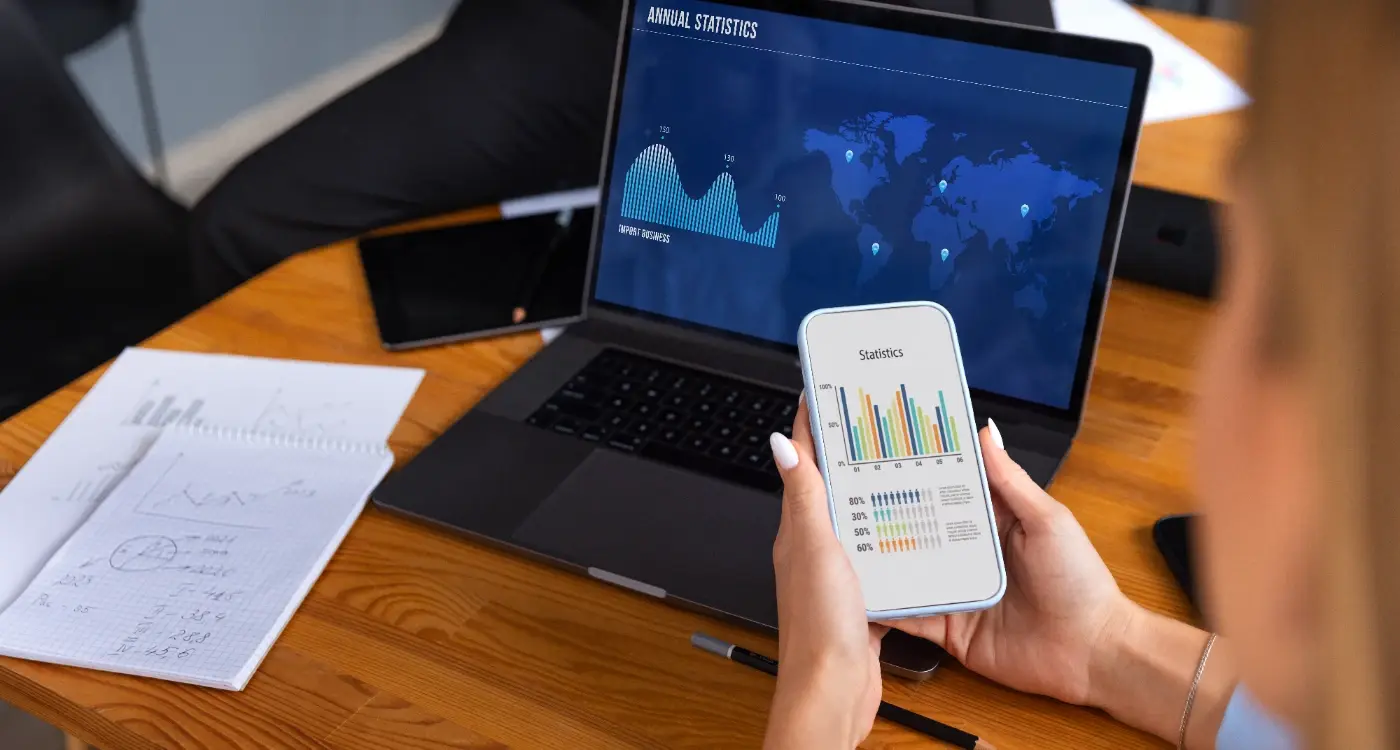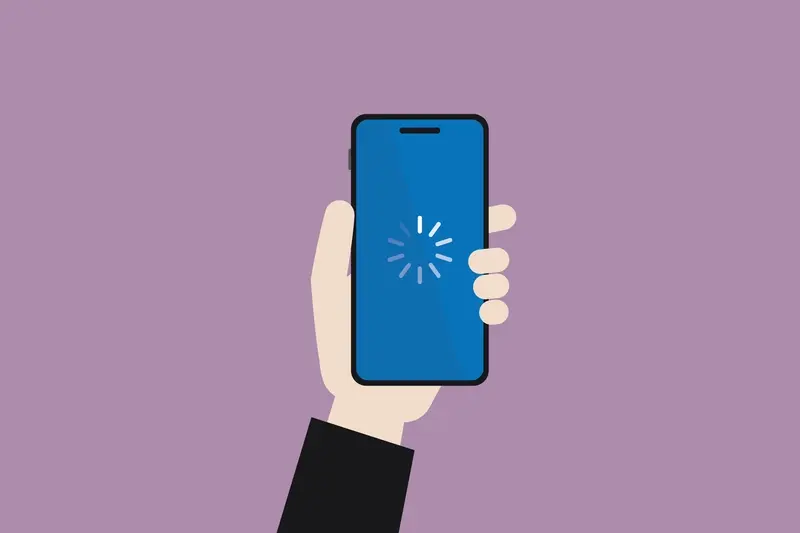What Performance Metrics Matter Most for Wearable Apps?
Wearable apps have a failure rate of around 80% within their first year, and poor performance is one of the biggest culprits behind this staggering statistic. I've spent years optimising apps for everything from Apple Watches to fitness trackers, and I can tell you that wearable performance is a completely different beast compared to smartphone apps. The constraints are tighter, the expectations are higher, and honestly—there's no room for error when you're dealing with devices that have limited battery life and tiny processors.
What makes wearable performance so tricky? Well, you're working with devices that might have less processing power than a smartphone from five years ago, yet users expect instant responses and all-day battery life. It's a balancing act that requires you to think differently about every aspect of your app's design and functionality. The metrics that matter for a smartphone app might be completely irrelevant for a smartwatch—and vice versa.
Performance on wearables isn't just about speed; its about creating an experience that feels effortless even when the hardware is working at its limits
Through this guide, we'll explore the specific performance metrics that can make or break your wearable app. From battery consumption patterns that I've seen destroy otherwise brilliant apps, to the memory optimisation techniques that separate amateur developers from the pros—we'll cover the measurements that actually matter. Because here's the thing: you can't optimise what you don't measure, and measuring the wrong things will lead you down some expensive rabbit holes.
Battery Life and Power Consumption Metrics
Battery life is the make-or-break factor for wearable apps—I mean, what's the point of a smartwatch that dies halfway through your morning jog? After working on countless wearable projects, I can tell you that users will delete apps that drain their battery faster than they can say "low power mode". It's genuinely that simple.
The key metrics I track for every wearable app include CPU usage percentage, display-on time, sensor polling frequency, and background processing cycles. These numbers tell the real story of how your app behaves in the wild. I've seen apps that look perfect in testing but absolutely hammer the battery because they're constantly pinging GPS or updating the display unnecessarily.
Critical Power Consumption Areas
- Screen brightness and display duration
- GPS and location services frequency
- Heart rate monitor sampling rates
- Bluetooth and WiFi connectivity patterns
- Background data synchronisation
- Processor-intensive calculations
Here's what I've learned over the years—users expect their smartwatch to last at least a full day, preferably two. If your app is the reason their device dies before dinner, you're in trouble. The sweet spot is keeping your app's power consumption under 5% of total battery drain per hour of active use.
One mistake I see constantly? Developers who don't test their apps over extended periods. Sure, it might run fine for 30 minutes in your development environment, but what happens after 12 hours of real-world usage? That's when power management issues become obvious. Always test with the display settings and usage patterns that actual users have—not your perfectly optimised development setup.
Memory Usage and Storage Optimisation
Right, let's talk about something that'll make or break your wearable app—memory usage and storage. I can't stress this enough: wearables are not smartphones. They've got limited RAM, tiny storage capacity, and frankly, they're quite unforgiving when you push them too hard. Most smartwatches have between 512MB to 1GB of RAM, which sounds decent until you realise the operating system needs its share too.
The biggest mistake I see developers make? Treating wearable apps like miniature phone apps. That's a recipe for disaster, honestly. Your app needs to be lean, mean, and incredibly selective about what it keeps in memory. Every image, every cached piece of data, every background process—they all add up faster than you'd expect on these devices.
Key Memory Metrics to Track
- Peak memory usage during typical user sessions
- Memory footprint when running in background mode
- Storage space consumed by cached data and user preferences
- Memory allocation patterns during data synchronisation
- RAM usage spikes during heavy processing tasks
Keep your app's memory footprint under 50MB whenever possible. Most wearables will start killing background processes aggressively once you exceed this threshold, and your users will notice the performance impact immediately.
Storage optimisation is equally important but often overlooked. Users might install dozens of apps on their wearables, so you can't assume you'll have loads of space available. Compress images aggressively, use efficient data formats, and implement smart caching strategies that automatically clear old data. I've seen apps that work perfectly during testing but fail miserably in real-world scenarios because they didn't account for storage constraints on older devices.
Processing Speed and Response Times
When someone taps their smartwatch screen, they expect something to happen immediately. Not in a second or two—immediately. I've learned this the hard way over the years, watching users get frustrated with apps that feel sluggish on their wrist devices. The thing is, wearables have much less processing power than phones, so every millisecond counts.
Response times under 100 milliseconds feel instant to users. Anything between 100-300ms is acceptable for most interactions, but once you hit 500ms or more? That's when people start feeling like something's wrong. And honestly, on a device that's meant to give you quick information at a glance, slow responses kill the entire user experience.
Key Response Time Targets
- Touch interactions: Under 100ms for immediate feedback
- Screen transitions: 200-300ms maximum
- Data loading: 500ms for cached content, 2 seconds for network calls
- Voice command processing: 300ms for recognition to start
- Notification display: Instant (under 50ms)
The tricky bit with wearable processing speed is that these devices often throttle their CPU to save battery. Your app might run perfectly during testing but slow down dramatically in real-world use when the device is trying to preserve power. I always test apps after they've been running background processes for a while—that's when you discover the real performance bottlenecks.
One mistake I see developers make is trying to do too much processing on the wearable itself. Sometimes it's better to offload heavy calculations to the paired smartphone and just display the results on the watch. Sure, it adds network latency, but it can actually be faster than struggling with limited processing power.
Network Performance and Data Usage
Network performance on wearables is a completely different beast compared to smartphones. Most wearable apps rely heavily on their paired phone for internet connectivity—and that connection isn't always reliable. I've seen too many wearable apps fail because developers assumed they'd have constant, fast data access. That's just not how the real world works.
The key metrics you need to track are data transfer efficiency, connection reliability, and sync performance. Your app needs to work gracefully when the Bluetooth connection drops out (and trust me, it will). Users get frustrated when their fitness data doesn't sync properly or when notifications stop coming through because of poor network handling.
Data Compression and Smart Syncing
Wearables generate tons of sensor data—heart rate readings, step counts, GPS coordinates. If you're sending all this raw data over Bluetooth every few seconds, you'll drain the battery and create a terrible user experience. Smart apps batch this data, compress it, and sync at optimal intervals.
The most successful wearable apps sync data in the background when the device is charging, not when users are actively trying to use the app
Offline-First Architecture
Your wearable app should assume it's offline most of the time. Store data locally, queue network requests, and sync when connectivity improves. I always build in retry logic with exponential backoff—constantly hammering a poor connection just makes everything worse. Users need their wearable to work whether they're in a basement gym or on a mountain trail with spotty phone coverage.
Monitor your network error rates, average sync times, and data usage per session. These metrics will tell you more about real-world performance than any lab test ever could.
User Interface Performance on Small Screens
Designing interfaces for wearables is honestly like trying to fit an entire conversation into a text message—every pixel counts. I've worked on smartwatch apps where we spent weeks debating whether a button should be 2 pixels wider, and you know what? Those decisions actually matter when you're dealing with screens that are barely bigger than a postage stamp.
The frame rate is your best friend here. You want to hit that sweet 60fps consistently, but more importantly, you need to maintain it when users are interacting with your interface. I've seen beautifully designed watch apps that stutter every time someone tries to scroll through a list—it's painful to watch, literally. The key metrics I always track are touch response time (should be under 100ms), scroll smoothness, and animation consistency.
Screen Real Estate Challenges
Here's where things get tricky; you can't just shrink your phone app interface and call it a day. I learned this the hard way on one of my first wearable projects—we tried to cram too much information onto the screen and users couldn't read anything properly. The text was tiny, buttons were impossible to tap accurately, and the whole experience was frustrating.
Touch targets need to be at least 44 pixels square for comfortable interaction, but that eats up massive amounts of screen space on a smartwatch. This means your UI performance isn't just about technical metrics—it's about how efficiently you use every available pixel. Loading times become more noticeable too; when someone lifts their wrist to check something, they expect immediate results, not a spinning loader.
Health and Fitness Data Accuracy
Here's something that genuinely frustrates me about wearable app development—everyone obsesses over fancy features but ignores the one thing users actually care about: accurate data. I've worked on fitness apps where the step counter was off by thousands, heart rate monitors that couldn't tell the difference between a brisk walk and a marathon, and sleep trackers that thought people were awake when they were clearly snoring. It's honestly a bit mad how often this gets overlooked.
Data accuracy isn't just about having the right sensors; it's about how your app processes and validates that information. The Apple Watch might be brilliant at detecting movement, but if your algorithm can't filter out false positives—like counting arm movements while brushing teeth as steps—you're going to have angry users. And trust me, once someone loses faith in your data accuracy, they don't come back.
Key Accuracy Metrics to Monitor
When I'm working on wearable performance optimisation, I always track these specific metrics because they directly impact user trust and retention:
- Step count variance compared to manual counting (should be within 5%)
- Heart rate accuracy during different activity levels
- GPS tracking precision for distance measurements
- Sleep stage detection reliability
- Calorie burn calculation consistency
- Data synchronisation accuracy between device and phone
Always validate your health data against established benchmarks. If your wearable analytics show a user burned 3,000 calories sitting at their desk, something's wrong with your algorithms—not their metabolism!
The thing is, users don't care about your technical limitations. They want their wearable app to tell them the truth about their health metrics. That means investing time in proper calibration, regular testing across different user scenarios, and—this is key—being transparent about accuracy limitations rather than pretending your data is perfect when it isn't.
App Launch Times and Loading Performance
Wearable apps need to be fast. Really fast. When someone lifts their wrist to check something, they don't want to wait around—and honestly, they won't. If your app takes more than a couple of seconds to open, users will just move on to something else.
The magic number for wearable app launches is 2-3 seconds maximum. Any longer than that and you're testing people's patience in a big way. I've seen beautifully designed apps fail completely because they took 5-6 seconds to load. People just stopped using them.
Cold Start vs Warm Start Performance
Cold starts happen when your app hasn't been used recently and needs to load everything from scratch. Warm starts occur when some app components are still in memory. Both matter, but cold starts are usually your biggest challenge on wearables.
The limited processing power means you need to be smart about what loads first. Show the user interface immediately, then load data in the background. Nobody wants to stare at a spinning wheel on their tiny watch screen.
Key Performance Indicators to Track
- Time to first screen (should be under 1.5 seconds)
- Time to interactive content (under 3 seconds)
- Memory usage during startup
- Battery drain during app launch
- Network request completion times
- Cache hit rates for frequently accessed data
One trick that works well is preloading your most common user actions. If people usually check their step count first, make sure that data is ready to go. It's about anticipating what users want before they even ask for it. And remember—on a wearable, every millisecond counts because the interaction window is so short.
Background Processing Efficiency
Background processing is where most wearable apps either shine or completely fall apart—and honestly, it's one of the trickiest aspects to get right. Unlike your phone which can handle multiple apps running simultaneously without breaking a sweat, wearables have strict limitations on what they can do when users aren't actively looking at the screen.
The key metric here isn't just how much processing your app does in the background, but how efficiently it does it. You're working with devices that might have less processing power than your old Nokia from fifteen years ago! Every background task needs to justify its existence; if it's not providing immediate value to the user, it shouldn't be running.
Smart Task Management
I've seen apps that try to sync data every thirty seconds in the background—its madness really. The best performing wearable apps batch their background tasks and run them at strategic intervals. Heart rate monitoring apps, for instance, should adjust their sampling frequency based on activity levels rather than constantly polling sensors at maximum resolution.
Background efficiency on wearables isn't about doing more—it's about doing less, but doing it smarter
Resource Scheduling
The most successful wearable apps I've built use intelligent scheduling for background operations. Instead of fighting the system, they work with the device's natural rhythms. Heavy processing gets queued for when the device is charging; data synchronisation happens during periods of low activity; sensor readings get prioritised based on user context.
You know what? The apps that perform best often do the least background processing. They're smart about when to be active and when to sleep, which keeps both performance smooth and battery life reasonable.
After building wearable apps for years, I can tell you that the performance metrics we've covered aren't just numbers on a dashboard—they're the difference between an app that people actually use and one that gets deleted after a week. Battery life remains king, but it's the combination of all these metrics working together that creates a genuinely useful wearable experience.
The reality is that wearable users are incredibly unforgiving. They expect their device to last all day, respond instantly, and provide accurate data without thinking about it. Miss any of these expectations and you'll see it reflected in your retention rates pretty quickly. I've watched promising apps fail because they focused too heavily on features while neglecting the basics like memory optimisation or background processing efficiency.
What's interesting is how interconnected these performance areas are. Poor memory management affects battery life; slow network requests impact user interface responsiveness; inefficient background processing drains power and degrades the overall experience. You really need to think about wearable app performance as a complete system rather than individual components.
My advice? Start with battery consumption and response times as your primary focus areas. Get those right first, then work on the other metrics systematically. Use real devices for testing—emulators simply don't capture the performance constraints of actual wearable hardware. And remember, what feels fast on a smartphone will feel sluggish on a smartwatch.
The wearable market is still evolving rapidly, but these fundamental performance principles aren't going anywhere. Master them now, and you'll be well-positioned to create apps that people genuinely want to keep on their wrist.
Share this
Subscribe To Our Learning Centre
You May Also Like
These Related Guides

What Makes Enterprise App Performance Monitoring Essential?

What's Normal When It Comes To App Loading Times?



